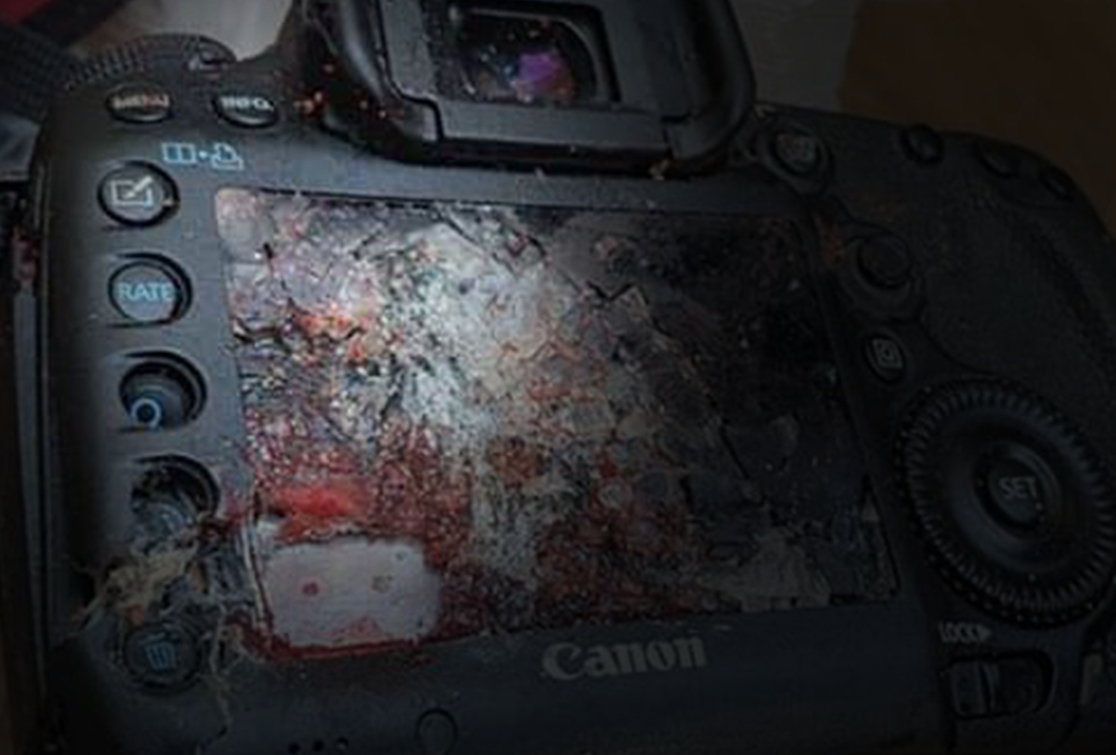Syrian Regime Forces Kill Two Media Workers in Eastern Ghouta

SNHR has released its report that documents violations against media workers by all parties to the conflict in Syria.
The report notes that all of the parties to the conflict have oppressed journalists and citizen journalists to varying extents, committing crimes qualifying as war crimes against them. The Syrian regime, however, is the party who has perpetrated most of these crimes since March 2011, where the Syrian regime has been responsible for up to 83% as it waged a systematic war on media work, committing hundreds of violations against journalists and citizen journalists, including killing, arrest, and torture in an attempt to conceal the human rights violations that the Syrian people are being subjected to and hide the crimes against Syrian citizens.
According to the report, ISIS, factions from the armed opposition and Self-Management forces resorted to suppressing views as a policy in their areas of control as seen by the wide arrests they made.
The report stresses that a journalist is a civilian individual according to the international humanitarian law regardless of their nationality. Any attack deliberately directed against a journalist is considered a war crime. However, when a media worker gets close to action-heavy zones, they are responsible for their own actions where targeting them in such case would be seen as collateral damage. Also, they would lose the right to protection if they were involved in hostilities.
According to the report’s methodology, a citizen journalist as anyone who plays a significant role in reporting and publishing news. He is not necessarily impartial as a journalist should be. In case a citizen journalist bore arms and was directly engaged in hostilities, he would be no longer deemed a citizen journalist whereas it is possible that he would be referred to as a citizen journalist again, provided he retires completely from military action.
This report draws upon, firstly, on the daily, ongoing documentation and monitoring efforts by SNHR team, and on accounts from survivors, eyewitnesses, and local media workers. The report contains 10 accounts that were collected through speaking directly to eyewitnesses, and not cited from any open sources, in addition to analyzing a large number of the videos and pictures that were posted online or were sent by local activists.
The report records that four media workers were killed in February, including two who were killed by the Syrian regime in Eastern Ghouta, Damascus suburbs, while Russian forces and Self-Management forces each killed one media worker.
Also, the report documents one case of arrest where the detained media worker was released later by Kuridsh Self-Management forces.
The report notes that five media workers were injured – three at the hands of Syrian regime forces and two by forces we believe were Russian.
The report also records two attacks. One by Syrian regime forces on a live-broadcast vehicle, while the other was by other parties who assaulted one media worker.
The report calls on the OHCHR to condemn the targeting of media workers in Syria and shed light on their sacrifice and suffering. In addition, the report calls on the COI and the IIIM to launch investigations on the targeting of media workers specifically, considering their integral role in recording incidents in Syria, as the report emphasizes that SNHR is willing to cooperate and provide more evidences and data.
Additionally, the report calls on the Security Council to fight impunity policies by referring the case in Syria to the International Criminal Court.
Moreover, the report calls on the Arabic and international media institutions to support their colleagues in the field of media by publishing periodic reports that shed light on their daily suffering and memorialize their sacrifice. Also, they should contact their families to console them.
Finally, the report stresses that all parties have to respect the international humanitarian law in their areas of control with respect to the protection of civilians and especially media workers and their equipment.


